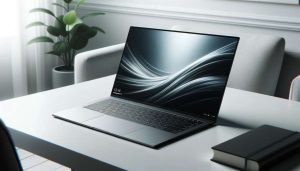Unlock Tech Success with Our Complete Guide to help fix your PC or Laptop.
In the digital age, our lives revolve significantly around technology.
Computers, in particular, are central to our everyday tasks—be it for work or leisure.
As essential as they are, they’re not immune to issues.
But fear not!
You don’t need to be a tech expert when you have the right guide at your fingertips.
At PcComputersNSW, we understand how intimidating computer repairs can seem.
That’s why we’ve crafted this comprehensive guide — so you can tackle common problems with confidence and keep your machine running smoothly.1.
Diagnosing the Problem
Before diving into any repair job, it’s crucial to diagnose what’s wrong with your computer accurately:
Slow Performance: If your computer is moving slower than usual, it could be due to a lack of storage space or running too many programs at once.
Frequent Crashes or Blue Screen of Death (BSOD):
This could indicate hardware failure or software conflicts.
Overheating:
Blocked vents or dusty internal components often cause computers to overheat.
Strange Noises:
A failing hard drive or cooling fan might make unusual noises.
Understanding these symptoms helps pinpoint issues more effectively.2.
Basic Troubleshooting Steps
Start by trying these straightforward fixes that solve various minor problems:
Restart Your Computer
The classic “turn it off and on again” method resolves temporary glitches by clearing RAM and restarting processes.
Check All Cables
Loose connections can lead sometimes lead to unexpected errors; ensure all cables are secure.
Run Antivirus Scans
Malware can wreak havoc on system performance; regular scans help maintain security and functionality.
Update Software and Drivers
Keeping software up-to-date ensures compatibility and optimal performance while minimizing vulnerabilities.
These basic steps often resolve simple issues without needing in-depth technical knowledge.3.
Addressing Common Hardware Issues
When troubleshooting doesn’t fix the problem, consider these common hardware issues:
Memory (RAM) Problems
If applications crash frequently or files won’t open properly:
Try reseating memory modules.
Consider upgrading RAM if necessary for better multitasking capabilities.
Hard Drive Failure
Signs include slow file access times and corrupted data:
Back up important files immediately if you suspect hard drive failure.
Replace the hard drive if needed—a solid-state drive (SSD) offers faster speeds.
Failing Power Supply
A faulty power supply might cause random shutdowns:
Inspect for bulging capacitors as an indicator of power supply health.
Swap out the old unit for a new one—make sure the wattage aligns with system requirements.
These interventions require some technical know-how but are manageable with careful attention.
Cleaning Your Computer Internally & Externally
Dust buildup inside a PC leads to not only overheats but also sluggishness over time:
External Cleaning:
Use microfiber cloths to gently clean monitor surfaces exterior cases keyboard keys avoid using liquid cleaners directly on electronics instead dampen cloth lightly
Internal Cleaning:
Disconnect the power source open the case carefully use compressed air clear dust fans heatsinks other components static electricity caution advised handling sensitive parts
Regular cleaning extends the life span and ensures peak operation even during intensive use sessions
Software Solutions Beyond Basics
Sometimes deeper level intervention is required here areas explored:
Operating System Reinstall
Reinstalling OS drastic move addresses persistent stability performance problems always back before proceeding
Driver Rollbacks Updates
Incorrectly updated drivers cause instability rolling back the previous version and restoring stability alternatively seek newer drivers manufacturer’s website may offer a solution
Remember to always proceed with caution when making significant changes to the software to avoid losing important data and creating additional complications
Key Takeaways
Here’s what remember tackling tech troubles yourself:
Start simple troubleshooting restart update scans cables
Recognize symptoms and diagnose issues correctly
Understand tackle common hardware fixes safely and effectively
Keep the machine clean both inside out regular maintenance pays dividends long run
Don’t be afraid to delve deeper into software solutions when necessary backing data key
By keeping these tips in mind ready to face almost any computer challenge comes armed knowledge confidence success just reach
FAQs
Question 1: How do I know whether my problem is hardware-related or software-related?
Answer: Look at patterns does the issue occur starting application point towards specific piece associated program crashes regardless activity likely indicates overall system concern possibly related to a component
Question 2: When should I seek professional help with my computer repairs?
Answer: If you are uncomfortable opening the device unfamiliar terms used in this guide experiencing complex like motherboard damage best consult professionals PcComputersNSW here assists every step providing the expertise and support required in tricky situations
Question 3: Can upgrading components improve my computer’s performance?
Answer: Absolutely!
Upgrading parts like RAM SSD injects new life into older machines significantly boosting speed capacity to handle modern applications games productivity tools
Remember no matter how daunting the task of repairing own technology seems there wealth of resources available to aid the journey Plus knowledgeable teams place PcComputersNSW just a phone call away whenever need an extra hand Whether a beginner or seasoned user complete guide aims to empower navigate the world tech ease assurance of successful outcomes Happy fixing!


